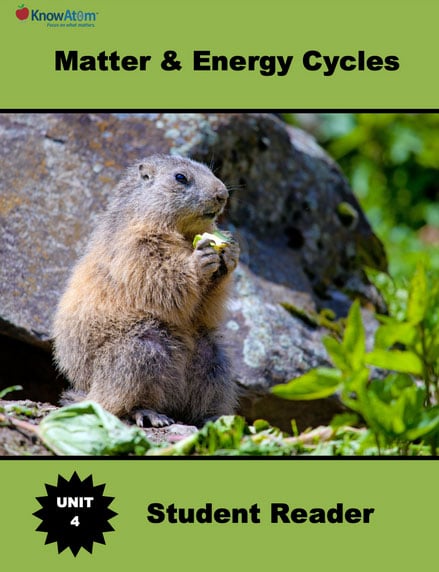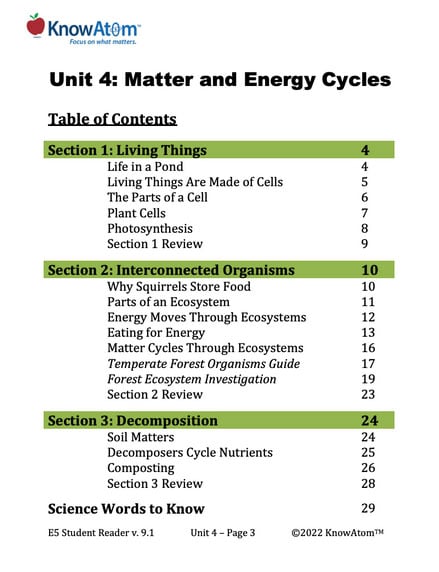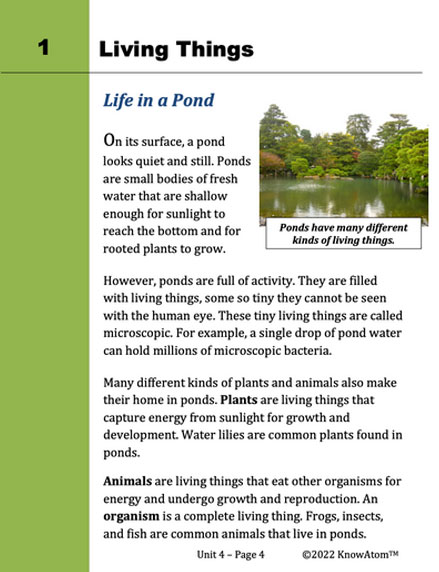The science background section provides teachers with more detailed information about the phenomena students explore in this unit. Below is an excerpt from the science background information on decomposition.
Decomposition—the breakdown of organic waste materials into usable nutrients—is responsible for nutrient-rich soil.
The nutrients released by decomposers are essential for plant growth. Because of this, earthworms have been called “nature’s gardeners” because of their role in producing healthy soil. As decomposers feed on organic matter, they break down the once-living matter. This causes the nutrients within the decomposing matter to be recycled back into the environment. The water stored in the once- living matter is also released back into the environment.
Because of this, decomposed matter is rich in nutrients. Many people use their scientific knowledge about decomposers to compost organic matter. Compost is organic matter that has decomposed and is used as a soil fertilizer. Fertilizer is any kind of matter that is applied to soils or plant structures (often leaves) to supply one or more kinds of plant nutrients.
Composting is done by decomposers, primarily microbes. They need four ingredients to work effectively: carbon, nitrogen, oxygen, and water. Almost all plants and animals contain both carbon and nitrogen. However, different organisms have different amounts of each. For example, matter that has a lot of carbon is often brown and dry. Matter that has a lot of nitrogen, such as fruits and vegetables, tends to be colorful and wet.
There are many factors that influence how soil forms and how rich in nutrients it is. For example, a dry environment may have a lot of inorganic matter, such as gravel or sand. In contrast, an environment with many trees, like a forest, will have more decaying organic matter.
Weather and climate also affect how many nutrients a particular soil holds. In climates that are wet and warm, decomposition occurs more quickly. This causes more nutrients to be available to growing plants. Dry and cool climates have soils with fewer nutrients, and therefore less plant-life. This is because microbes do best in warm temperatures, between 21 and 38 degrees Celsius (70 and 100 degrees Fahrenheit). Populations of microbes double in the soil with every addition of 12 degrees.
The amount of oxygen also influences soil quality. Like all organisms, decomposers need oxygen to survive. That oxygen comes from the air, so soil that is looser and allows oxygen to reach deep into it causes decomposition to occur more quickly. Soils that are tightly packed together, such as soils with clay, have less decomposition because there is less oxygen.
The amount of water also influences how much decomposition happens. All living things, including microbes, need water to survive. However, too much water fills the spaces in the soil, blocking oxygen. Because of this, decomposition happens most quickly in soils that are sometimes wet and sometimes dry.








